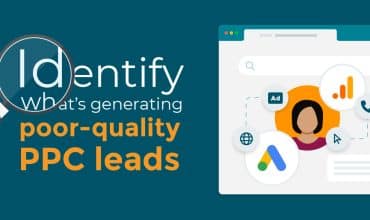Why you’re doing conversion rate optimisation wrong
Are you spending hours studying your conversion rate data, wondering why your campaigns aren’t delivering the conversions you’d hoped for?
Using web analytics data to inform your conversion rate optimisation (CRO) strategy is a great start. But there’s a good chance you’re missing a crucial factor that should be central to all your conversion rate optimisation work.
In 2023, CRO should be all about gaining a greater understanding of the customer journey. Not what you think the customer journey looks like, but what it actually looks like.
Your objectives may be to drive marketing goals such as email sign-ups and content downloads, or commercially-driven goals such phone calls and sales. Whatever your focus, understanding how your customers interact with your business throughout their buying journey is key to a successful conversion rate optimisation strategy.
It’s easy to think about CRO purely from a numbers and data perspective
For example, you may have been set a target of hitting X% conversion rate on your goals over the next 12 months. A natural next step is to dive into your performance figures – Google Analytics being the usual first stop – to see where conversions currently do and don’t happen. You may then decide to make some tactical changes to improve your conversion rate.
Your data may show that web users tend to drop off at your pricing page. So you implement some changes to make pricing clearer. Perhaps you give the option for visitors to choose a free trial instead.
Now, don’t get me wrong – there’s a lot of valuable insight to be gained from diving into your analytics. But in the age of complex customer journeys, bog-standard analytics alone just won’t cut it when it comes to gathering insights to smash those lofty conversion targets.
Why conversion rate optimisation best practice isn’t always best
If you search for conversion rate optimisation ideas online, you may find a list of tactics similar to this:
- Add lead capture pop-ups to your site
- Streamline your lead generation forms, removing unnecessary fields that might put people off contacting you
- Remove distractions from landing pages – keep the call to action focused and clear
- Add live chat to your site
The trouble with blindly implementing these kinds of tactics is that they don’t factor in the real-world needs of your customers and prospects.
Most best-practice advice also focuses on the online journey and misses out offline channels – such as your phone calls.
If you see paid ad campaigns with low online conversions in analytics, for example, you may decide to switch them off. But what if your ads are converting very well? It may be that people are picking up the phone and calling you, instead of converting online.
The tactics in the list above are best practices that may work for others. They may not be optimal for your business and, most importantly, for your customers and prospects.
Ask yourself the following questions:
- Would my prospects welcome another pop-up form on my website?
- Is live chat going to help my prospects at that particular moment?
- Is my call-to-action going to deliver the perfect cocktail of emotion, relevance, and timeliness?
- Are my prospects converting in the ways I think they are?
- Am I missing conversions because I’m not currently tracking certain channels (such as phone calls)?
- Does my analytics data give me a true picture of this?
You’ll notice one key thing with these questions. They all focus on the prospect/web visitor’s user experience. It’s all about understanding the customer journey in detail. It’s not about relying on a helicopter view of big picture numbers and analytics data.
The key is to start thinking about your customers and prospects as people with real-world needs, not as a conversion rate percentage. Do this and you’ll be on the right track to delivering positive changes to your conversion rates.
A more customer-driven approach to conversion rate optimisation will help you in two ways:
- You’ll get straight to the strategies that work best for your business and customers
- You’ll get insights into customer and prospect behaviour that you didn’t previously know – useful for informing other areas of your marketing strategy, too
3 foolproof ways to better understand the customer journey
So how do you go about gathering this valuable customer insight? Here are three methods to consider.
- Customer surveys and questionnaires – Surveying your customers to understand what they like and don’t like about your website, for example, is a surefire route to gathering compelling insights to help optimise your conversions. Amass a large enough sample of data and you’ll start to see trends that you can use to inform your decision-making.
- Real-time user testing – Running A/B tests on different elements of the customer experience can help you understand customer preferences, too. You’ll be able to watch in real-time as website visitors interact with things like menus and web forms.
- Customer behaviour analytics tools – Google Analytics is a fantastic tool for gathering web user data. But it won’t give a complete picture of customer needs on its own. To get the most valuable insights, try adding call tracking and marketing attribution software to your martech stack. You’ll get much richer, more actionable data on how your customers behave and convert against your goals.
Ready to start driving up conversions?
There’s no doubt knowing the customer journey inside out will help you make better-informed decisions to improve conversion rates.
Tech-savvy prospects hop from device to device, researching their problems across both online and offline channels. That’s why it’s crucial to focus your conversion rate optimisation work on nailing down that customer journey.
This blog was originally published in 2022, and revised and republished in August 2023.

Read the case study and learn how leading care home group Barchester Healthcare used Mediahawk to understand the customer journey and increase occupancy from one of their key digital marketing sources.



